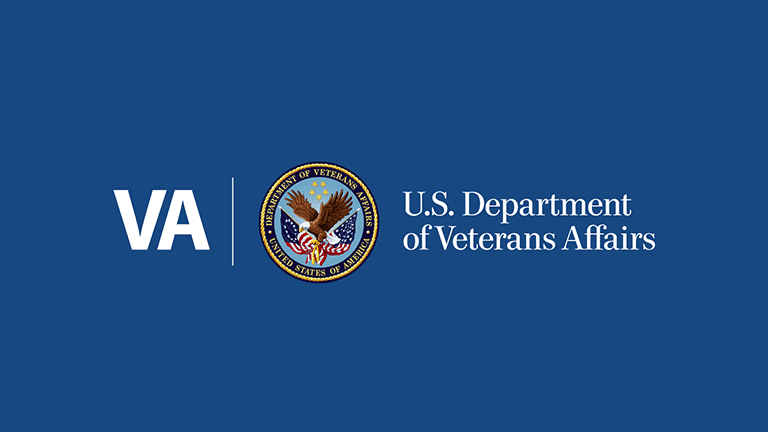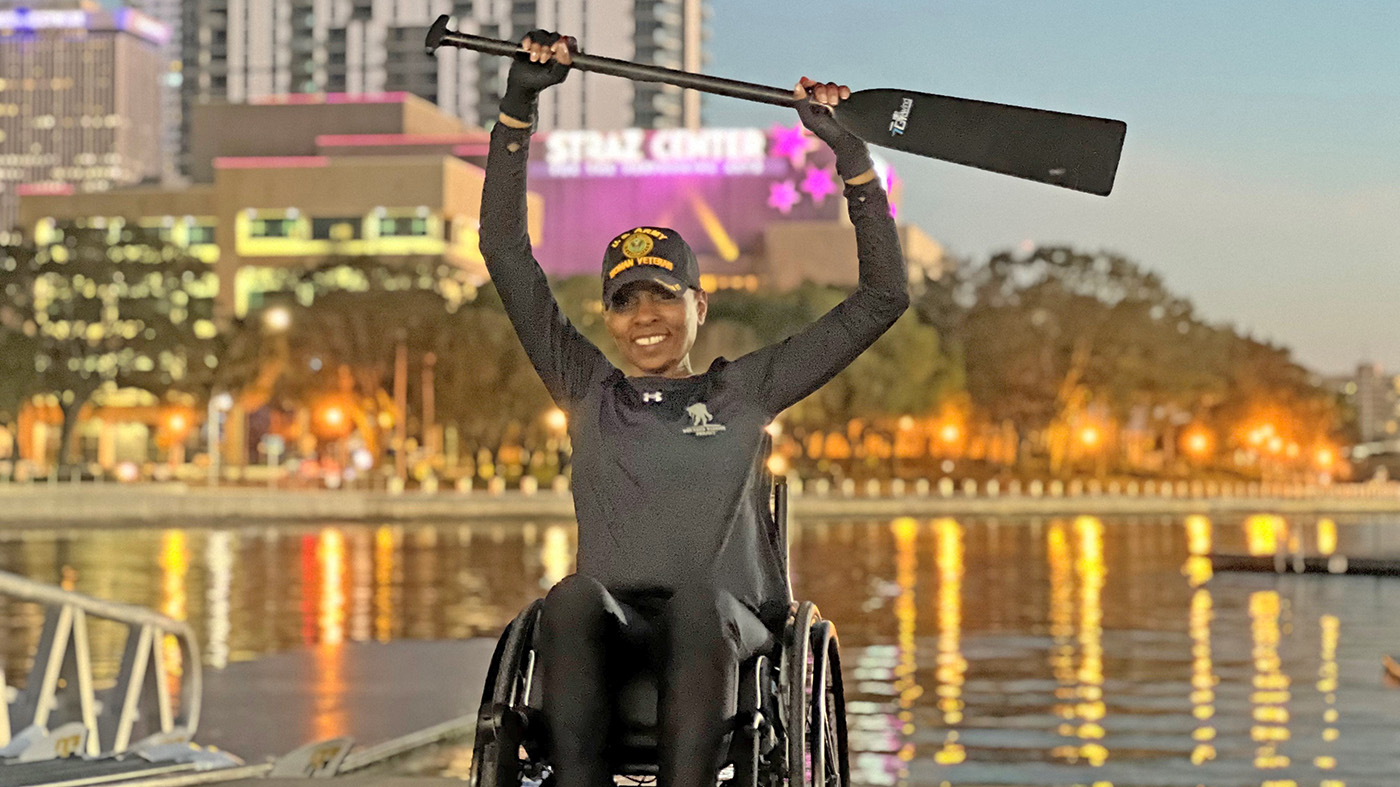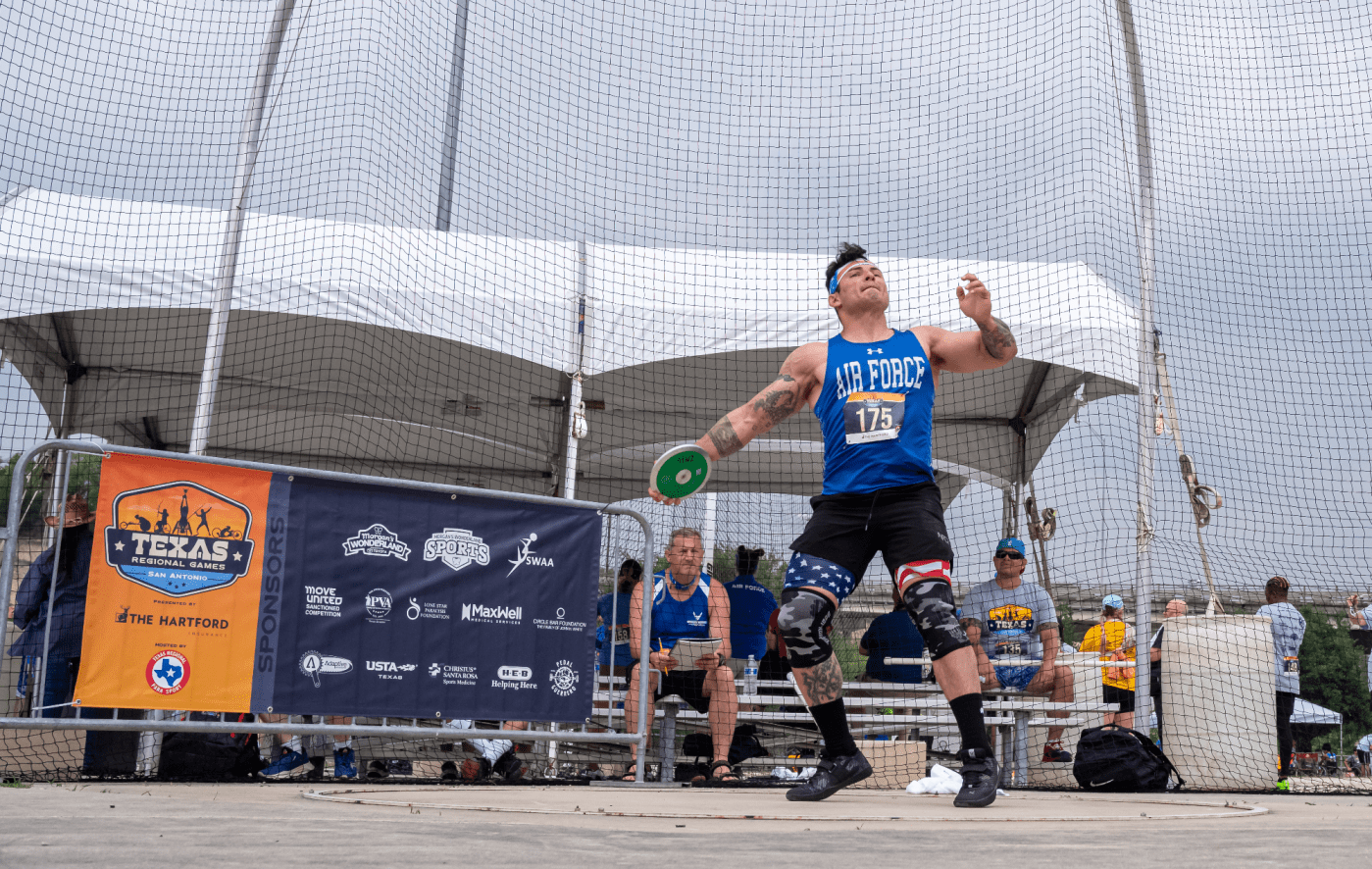The year was 1947 – Jackie Robinson joined the Brooklyn Dodgers, the Dead Sea Scrolls were discovered at Qumran, a Hollywood “blacklist” was developed by the House Un-American Activities Committee, Chuck Yeager broke the sound barrier piloting a rocket-powered Bell X-1 plane, the Marshall Plan was proposed to help European nations recover from World War II, and Anne Frank’s diary was published.
Harry Truman signed a presidential order in 1947 turning the military’s blind rehabilitation training of Servicemembers over to the VA, as a part of preparing the nation for post-war adjustment. Previously, in 1944, President Roosevelt had made an extraordinary commitment to blinded Servicemembers with an order declaring “no blinded servicemen from WWII would be returned to their homes without adequate training to meet the problems of necessity imposed upon them by their blindness.”

First chief of the Blind Center Russ Williams, in his office talking with a patient at the Blind Rehabilitation Center, Hines VA Hospital in Chicago. (VHA Photo Archives)
The pioneering military rehabilitation programs that resulted for Servicemembers of WWII formed the nexus of VA’s subsequent blind rehabilitation care. The Army Medical Corps developed a program in which blind soldiers received medical and surgical treatment at two centers: Letterman General Hospital, San Francisco, CA (later transferred to Dibble General Hospital, Menlo Park, CA) and Valley Forge General Hospital, Phoenixville, PA. While receiving medical care, the blinded Servicemembers began their rehabilitation training. The second phase was at Old Farms Convalescent Hospital, Avon, CT, where they were provided with an intense 18-week rehabilitation.. The Navy also operated a program at Philadelphia Naval Hospital.
Post WWII
With the conclusion of WWII and the probability of deactivation of the military blind rehabilitation program, a debate ensued about where and how treatment of the 1,400 war-blinded Veterans would take place. President Truman settled the debate with his 1947 order, and responsibility for the adjustment training of those blinded during WWII was transferred to VA.
Hines VA Hospital in Chicago was selected as the first center site, due in part to its large and well-functioning physical medicine and rehabilitation department. In 1948, Russell C. “Russ” Williams, a WWII blinded Veteran and former counselor at the Valley Forge program, was appointed as chief. After four months of intensive staff training, the nine-bed unit admitted the first patient on Independence Day, 1948. Williams, a former patient of the Valley Forge and Old Farms blind rehabilitation programs, provided expert leadership in developing a model program; he had an unshakable faith in the capabilities of blinded Veterans.

Patients in the recreation room after hours socializing at the first Blind Rehabilitation Center, Hines VA Hospital in Chicago. (VHA Photo Archives)
This new program, a hub of talented leaders and staff, spawned the development of techniques and devices that formed the foundation of training for blind Veterans. The techniques for training in the use of a long white cane were transferred and refined, blind Veterans were taught techniques for reading, writing, taking care of their daily needs and living quarters and prosthetic devices were provided that enhanced their independence. First Army, then VA began partnering with guide dog schools to assure that blinded Servicemembers and Veterans could experience a more independent lifestyle with a well-trained guide dog.
More than canes and guide dogs
Today, VA supports 13 inpatient blind rehabilitation centers across the US. These centers provide a breadth and depth of intensive and supportive care that restores abilities of Veterans and Servicemembers to achieve their independence, support their families, care for their homes, and integrate into their communities.
Blind rehabilitation training takes many forms, depending on the Veteran’s goals and interests. She or he can learn to orient to the environment, move safely and confidently with a human guide, long cane or guide dog, and take public transportation. Some of the other skills that are taught include reading, writing personal finance management, cooking, cleaning, organizing, taking care of the home, children and aging parents, lawn care, household repair, hobbies and crafts, woodworking, small engine repair and maintenance, and pet care. Devices and technology that support independence are provided and incorporated into the rehabilitation, such as computers, mobile computing devices, smart phones and global positioning devices. Job and education goals are addressed in the centers, and Veterans are referred for vocational and college-readiness training if necessary. Blind rehabilitation specialists work closely with optometrists who provide eye and vision examinations and prescribe optical devices that enhance Veterans’ remaining vision.
A physician or nurse practitioner is assigned to the center to conduct admission examinations, write orders, assure medications are used correctly, and provide medical care if needed during the Veteran’s stay at the program. Rehabilitation nurses monitor medical issues, educate about disease management such as diabetes, nutrition monitoring, provide support for smoking cessation and weight control, provide education for medication management and use of medical devices such as talking glucometer and blood pressure machine and audible prescription reading devices.
Fully integrated care
Centers also employ psychologists and social workers to monitor well-being and learning style, to assure Veterans’ emotional health, and to assist instructors in best approaches for training. Social workers coordinate family training programs, gather resources for discharge planning and ensure that there are no social needs that will interfere with the success of rehabilitation. Chaplains may provide spiritual care for blind Veterans; chaplains represent many faith groups and minister to Veterans in their preferred religious traditions, as well as to those who do not profess faith.

Learn more about VA’s Blind Rehabilitation Services at: http://www.va.gov/blindrehab/
(With thanks to Denise Van Koevering, Chief, Hines BRC, for access to archives.)

Topics in this story
More Stories
Army Veteran Malika Montgomery says one of the things that helped her live her best life with multiple sclerosis was surrounding herself with positive people.
Acknowledging the issues that Veterans face and working toward solutions is crucial for ensuring they have the support they need to thrive in civilian life.
Last year, Move United hosted 26 adaptive sports competitions in 22 states for 1,537 individual athletes. This year, that number is increasing to 35 events in 24 states for even more Veteran athletes.






My grandfather was a Merchant Marine veteran of WWII. He’s gone now, but he loved VA and he loved the great attention and care he received from VA Long Beach, particularly his ophthalmologist, Dr. Mary Cote.
Several years ago, after grandma’s passing, grandpa found himself unable to tend to his everyday basic needs. It was VA Long Beach (maybe/probably Dr. Cote?) who told grandpa about the blind rehabilitation center in Palo Alto, CA.
Grandpa LOVED it, was raving about it, and he (stubbornly I might add) self subsisted for a couple years afterward due to the training he received there.
After a couple years, Grandpa finally relented, admitting that–while he was able to do many things on his own without eyesight–he didn’t want or didn’t need to live alone in a 4-bedroom, 2200 square-foot house. My wife and I took care of him in our own home for his last ten months. In all that time–multiple weekly appointments all over Orange County–he had only positive things to say about VA and his VAMC in Long Beach. In fact, he even used to volunteer there to help others!
His experiences with VA–and my own personal dealings with RO San Diego and VA Long Beach–were one of the biggest reasons why, after grandpa died, that I left a rewarding civilian career in Los Angeles for VA in Washington, DC.
This program is just excellent and if he were alive or able, my grandpa’d talk your ear off to tell everyone he could about it.
Jason Davis
Social Media, Veterans Benefits Administration
Brother and myself Vietnam. He cancer, me also, he also missing leg, cancer other thigh half cut away. Problem want to take away his pain meds, also tell him to exercise more but when does leg fills with fluids actually seeping through skin from swelling. Also telling him too much activity as wheel chair wearing out too often. Now which way is he supposed to go??? Someone someplace needs to get their heads together. Kentucky native here [grumppynfun@mail.com]. Someone give some answers. My better half retired law enforcement same type of problem from medical field. Druggies causing problem not the the ones that need the meds. Fact the ones that need and can not get the pain relief will most likely be the ones that do themselves in..